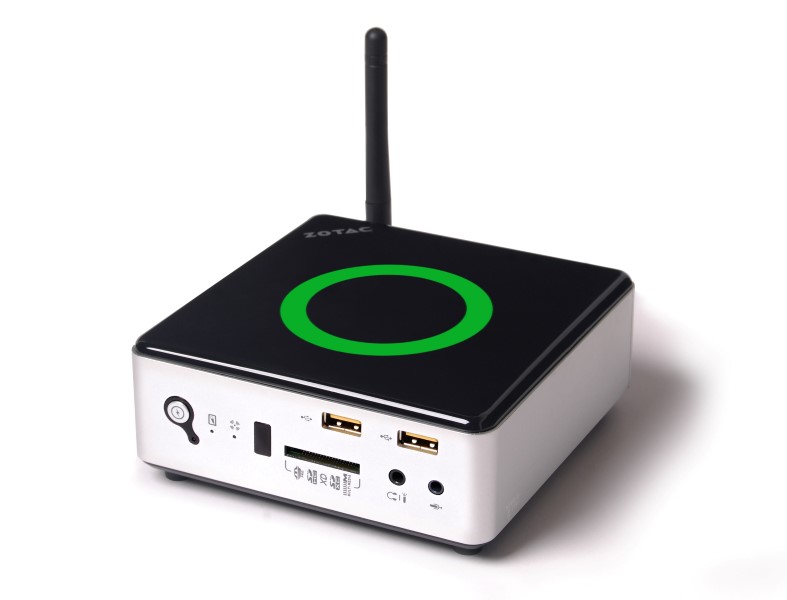Zotac ZBOX Nano AQ01 Updated with AMD Kabini APU
Zotac announced last week that it has updated the ZBOX nano AQ01 series with a quad-core "Kabini" APU, the AMD A4-5000, providing home theater capabilities in a super small form factor. This chip also has Radeon HD 8330 graphics, meaning the updated ZBOX nano model should reap the benefits of PC games optimized for AMD's Mantle API.
"AMD Radeon HD 8330 graphics empower the Zotac ZBOX AQ01 series with integrated graphics capabilities that rival discrete add-in boards. The DirectX 11.1 compatible graphics provides the ZBOX nano AQ01 with stunning 3D capabilities and video playback capabilities for a superior HTPC experience that smoothly renders complicated user interfaces and decodes stunning high-definition videos," reads the company's press release.
As always, these units arrive in two SKUs: fully loaded "Plus" and barebones. In addition to the APU (which clocks at 1.5 GHz), the ZBOX nano provides one 204-pin DDR3 SO-DIMM slot supporting up to 8 GB, but comes with a 4 GB chip for those who purchase the Plus model. There's also support for one 2.5 inch HDD or SDD, but the Plus model comes with a 500 GB 5400RPM HDD.
"The quad-core AMD A4-5000 enables the ZOTAC ZBOX AQ01 series to excel greatly with multi-tasking. With four cores to work with, the ZOTAC ZBOX nano AQ01 series delivers first-class system responsiveness for every day computing needs," reads the press release.
The specs also show that the updated ZBOX nano provides an HDMI output port, one DisplayPort, a 7-in-1 SD card reader, Gigabit Ethernet, Wireless N and Bluetooth 4.0 connectivity, and a combo mini-Optical S/PDIF / analog output. There are also two USB 2.0 ports on the front, three USB 2.0 ports on the back, and two additional USB 3.0 ports on the back.
"Our ZBOX nano form factor is well-regarded for its compact size and energy-efficiency. With the latest AMD A4-5000 APU, we're able to boost performance all around while reducing maximum energy consumption compared to our previous generation with the Zotac ZBOX nano AQ01 series," said Carsten Berger, senior director, Zotac International.
For more information about the new ZBOX nano AQ01 series, head here.
Get Tom's Hardware's best news and in-depth reviews, straight to your inbox.
Follow us @tomshardware, on Facebook and on Google+.

Kevin Parrish has over a decade of experience as a writer, editor, and product tester. His work focused on computer hardware, networking equipment, smartphones, tablets, gaming consoles, and other internet-connected devices. His work has appeared in Tom's Hardware, Tom's Guide, Maximum PC, Digital Trends, Android Authority, How-To Geek, Lifewire, and others.
